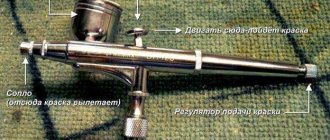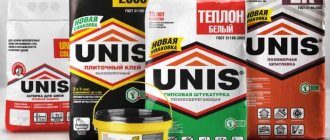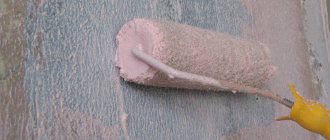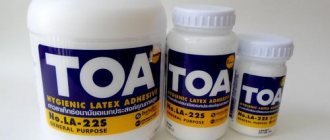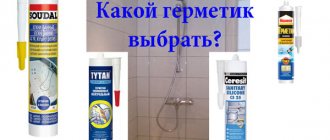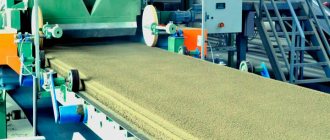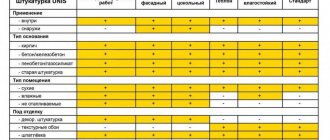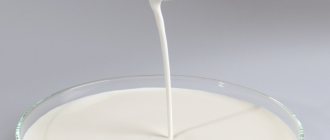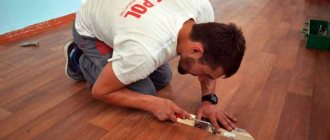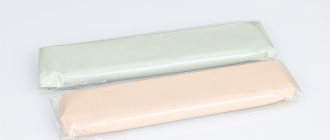Hot-melt adhesive for a glue gun can have different characteristics and purposes. First of all, they take into account what material the surfaces to be glued are made of. When purchasing, it is also important to evaluate the diameter and length of the glue cartridge and its melting speed. The most in demand is universal, inexpensive hot-melt adhesive based on ethylene vinyl acetate (EVA). When working with special materials, a special adhesive composition is used.
Who is handyman?
Handyman is almost as popular in America as Supermen. Just targeting different age groups. All American teenagers dream of becoming supermen in order to “save the world.” Many of them, having matured, become “handymen” and “save” their own home.
Handyman is a “jack of all trades,” a person who likes to do things with his hands (hand). A very popular activity in the USA.
Don’t believe it when they tell you that they are all “stupid”, they don’t know how to do anything with their hands... they can’t even screw in a light bulb. Perhaps the “office plankton” living in rented apartments in big cities is just that. But they are not the “real Americans.”
Every real American has his own house, which necessarily has a basement (ground floor, basement), which, in turn, is equipped with a workshop.
From our point of view, people become “handymen” by force. Unlike an apartment, when you can call someone and someone will do everything, your own house always means something needs to be nailed down, sawed off, etc. As for furniture, inexpensive mass-produced furniture has a lot of limitations and disadvantages. And many people simply cannot afford individual production. With basic skills and the appropriate tools, you can always customize finished furniture to suit your needs.
If we take into account the fact that all of America is “one-story” (see Ilf and Petrov) and the majority of Americans live in their own houses, the number of “handymen” is simply off the charts. They publish their own magazines, TV channels and online sites. Familyhandyman.com is one such resource.
Materials for production
Radiators for cooling LEDs vary in design and material.
Ambient air can receive no more than 5-10 W from a single surface
When choosing a material for the manufacture of a radiator, the following condition should be taken into account: its thermal conductivity must be at least 5-10 W. Materials with a smaller parameter will not be able to transfer all the heat that air can absorb
Radiators are traditionally made from aluminum, copper or ceramics. Recently, products made from heat-dissipating plastics have appeared.
We also recommend that you read in more detail about your DIY switching power supply.
Aluminum
The main disadvantage of an aluminum radiator is its multi-layer design. This inevitably leads to the emergence of transient thermal resistances, which must be overcome by using additional heat-conducting materials:
- adhesives;
- insulating plates;
- materials filling air gaps, etc.
Aluminum heatsinks for 1 W LEDs
Copper
Copper has greater thermal conductivity than aluminum, so in some cases its use for the manufacture of radiators is justified. In general, this material is inferior to aluminum in terms of lightness of construction and manufacturability (copper is a less malleable metal).
It is impossible to manufacture a copper radiator using the pressing method, which is the most economical method. And cutting processing produces a large percentage of waste of expensive material.
Copper radiators
Ceramic
One of the most successful options for a heat sink is a ceramic substrate, onto which current-carrying routes are pre-applied. The LEDs are soldered directly to them. This design allows you to remove twice as much heat compared to metal radiators.
Light bulb with ceramic radiator
Heat dissipating plastics
Increasingly, information appears about the prospects of replacing metal and ceramics with heat-dissipating plastic. The interest in this material is understandable: plastic costs much less than aluminum, and its manufacturability is much higher. However, the thermal conductivity of ordinary plastic does not exceed 0.1-0.2 W/m.K. It is possible to achieve acceptable thermal conductivity of plastic through the use of various fillers.
When replacing an aluminum radiator with a plastic one (of equal size), the temperature in the temperature supply zone increases by only 4-5%. Considering that the thermal conductivity of heat-dissipating plastic is much less than aluminum (8 W/m.K versus 220-180 W/m.K), we can conclude: the plastic material is quite competitive.
Light bulb with thermoplastic radiator
Table - Comparison of thermal conductivity of various materials
| Material | Thermal conductivity, W/m.K |
| Aluminum | 120-240 |
| Copper | 401 |
| Ceramics | 15-40; 100-200 |
| Heat dissipative plastics | 1 – 40 |
| Thermal paste | 0,1 – 10 |
What is hot melt adhesive?
Hot-melt adhesive is an adhesive substance that, when heated to a certain temperature, turns into a liquid state, and when cooled, returns to a solid state. Moreover, it can transition into these states many times.
Furniture makers know this type of adhesive as hot melt adhesive. In the molten state, the glue has high adhesive properties. In the solid state it forms a strong adhesive seam. The melting point is in the range of 100-200 degrees.
Hot-melt adhesive is made on the basis of thermoplastic polymers. Among the most popular polymers are ethylene vinyl acetate and polyamide.
Any hot melt adhesive consists of three components: the main polymer (about 50% of the volume), resins (30%) and plasticizers (20%). Resins give the glue high adhesion, and plasticizers reduce viscosity.
Hot melt adhesive is available in the form of solid adhesive sticks. The glue is heated using a special hot-melt (glue) gun.
How to use a heat gun
Tarkett art vinyl flooring (tarket art vinyl)
There is no adhesive in the core itself. The adhesion property appears during heating. Liquid polymer adheres to almost any element and surface.
The rod melts in the heating chamber of the tool and comes out through the nozzle. Low temperature cartridges are ready for use in approximately 2 minutes, after which the adhesive can be applied. The second part must be pressed firmly against the first and not released until they set.
If there is a lot of glue squeezed out, you will have to wait a couple of minutes. One drop sets in a few seconds. After five minutes, the working surfaces have completely cooled down and the adhesive layer becomes waterproof.
Charger
You can charge the device without disassembling it or using special devices. The first charge is also the simplest. The inlet and nozzle are still free of glue residue and undamaged. You need to insert the cartridge into it all the way.
The glue hardens quickly and is not afraid of waterSource fastbox.su
It is convenient to work with a heat gun with temperature indicators. The LED will show whether the device is still heating up or is ready for use.
When purchasing a device, you need to find out which rods fit it. Low-temperature transparent cartridges are universal. Rods are also widely used:
- Black. They are used to seal joints instead of sealant.
- Colored. The polymer has a uniform color, so it is not visible on the element that it is glue. It is popular among needlewomen, as it allows not only to fasten parts, but also to decorate them.
- Decorative. They are also used for decoration and contain mother-of-pearl, sparkles, and special fibers.
- High temperature. Suitable for fastening parts for which increased load is planned in operation.
When purchasing rods, it is important not to make a mistake with the diameter of the rod, which is usually indicated on the device itself, on the packaging and instructions for it. You cannot insert a consumable item of the wrong size into the device.
Please note that rods with a large diameter are not suitable for gluing small rhinestones, beads, and seed beads. The drop will be too large and will spread throughout the product and ruin its appearance.
Warming up
On the packaging of the rods you need to look at their melting point. If the tool is of low power, then transparent low-temperature ones are suitable. If you use consumables with a high heating temperature, you will not be able to glue anything.
At best, the glue will simply soften, but working with it will be very difficult or even impossible. The heat gun parts may break due to excessive pressure.
The polymer heating time varies from 2 to 8 minutes and depends on the power of the device and the quality of the glue. If you cannot squeeze out the molten glue, then the device is broken or the material does not fit it.
Strong heating has a bad effect on the performance of the instrument. The liquid polymer will flow out of the nozzle itself and may get into the coupling, which will need to be cleaned before the next use. If different types of consumables are often used, then the best option is a device with an automatic heating temperature regulator.
Even a beginner can charge and operate a glue gun. Source noginsk.leroymerlin.ru
Replacing rods
Beginning craftsmen often encounter such a difficulty as the remains of consumables in the heating chamber and guide coupling. In this case, the glue may come out of the feed mechanism. You can simply push the remaining piece with new polymer. But it’s better to drop some melted glue onto the end of the new cartridge and press it against the consumable, which is located in the tool.
If you need to change the polymer in an unheated device, you must first heat it up. A solid, frozen mass cannot be removed from the tool, as this threatens to break it. Therefore, it is worth plugging it into the network, carefully removing the old cartridge, and then installing a new one. This procedure may be necessary, for example, when changing colors when working with decor and finishing.
It is better if multi-colored consumables are from the same manufacturer. Then the operating mode will not be disrupted, and there will be no noticeable differences in the texture of the decor on the part. You can change not only the color of the polymer.
Can be glued without a gun
A hot glue gun powered by 220/110 V can be used effectively only if there is an electrical outlet within reach... But what to do if there is no outlet nearby? For example, somewhere in the forest? Or if you don't have a glue gun? Do you really need to glue something?
The glue stick can be melted with an ordinary lighter or matches.
Color coding
For colored glue sticks, there is a rule - if it is opaque, then it is a universal glue with pigment. A translucent rod with a color tint is intended for special purposes. The only exceptions are white and black. Of course, the glue will be effective when joining any materials, but it achieves maximum performance in a narrow segment. Eg:
- white opaque cylinder - glue is intended primarily for glass-metal combinations;
- translucent yellow glue shows maximum performance when working with wood, paper and wood-containing fibrous materials (fibreboard, chipboard, OSB, MDF, plywood);
- Black opaque glue has pronounced properties of a sealant and insulator, so it can be used to process live wires, electronic components, and strengthen seams.
The specific purpose of a particular glue stick can be found by reading the technical specifications on the packaging.
Identical parts are easier to glue together
If you have several identical parts, it is easier to process them in glued form: cutting, grinding, drilling, etc. After processing, the parts can be easily disassembled. The main thing is not to use too much glue. Spot gluing allows not only to securely fasten the parts together, but also to easily dismantle the connection after processing. To disassemble, you can use a spatula, and to remove residual glue, you can use a chisel.
Computing Features
Calculation of a circuit for creating a radiator with your own hands should always begin with the selection of the element base. Do not forget that the rating here must correspond not only to the potential of the assembled heat sink, but also to prevent the creation of additional losses. Otherwise, the homemade device will have low efficiency. And first of all, for this it is necessary to calculate the radiator area. What should the calculation of such a parameter as area include:
- modification of the device;
- what is the dispersion area;
- ambient air indicators;
- the material from which the heat sink is made.
Such nuances must be taken into account when a new radiator is being designed, rather than an old one being remodeled. The most important indicator for self-assembly of a heat sink will be the indicator of the maximum permissible power dissipation of the heat exchange element. There are two ways to calculate the radiator area. First calculation method. In order to determine the required area, you need to use the formula F = a x S x (T1 – T2), where:
- F—heat flow;
- S – surface area of the heat sink;
- T1 is an indicator of the temperature of the medium that removes heat;
- T2 is the temperature of the heated surface;
- a is a coefficient reflecting heat transfer. This coefficient for unpolished surfaces is conventionally assumed to be 6-8 W/(m2K).
Circumference
Using this calculation method, it is necessary to remember that the plate or rib has two surfaces for heat removal. In this case, the calculation of the needle surface is carried out using the circumference (π x D), which must be multiplied by the height indicator. Second calculation method. A somewhat simplified formula derived experimentally is used here. In this case, the formula S = x W is used, where:
- S—heat exchanger area;
- M – unused LED power;
- W – supplied power (W).
Moreover, if a ribbed aluminum apparatus is being manufactured, you can use the data obtained by Taiwanese specialists in the calculations:
- 60 W – from 7000 to 73000 cm2;
- 10 W – about 1000 cm2;
- 3 W – from 30 to 50 cm2;
- 1 W – from 10 to 15 cm2.
But in such a situation, it is necessary to remember that the above data is suitable for the climatic conditions of Taiwan. In our case, they should be taken only when carrying out preliminary calculations.
Magnets are easier to stick
Using magnets is convenient. The scope of application is limited only by your imagination: from fastening small metal objects to stopping meters. You can glue a magnet to any surface, including using hot glue using a glue gun.
Hot glue - dampers
As we know, in order to prevent furniture or other interior items from scratching the floor, it is necessary to use pads (dampers) made of some soft material: felt, rubber, silicone, etc.
Hot-melt adhesive does this job well. For example, you need to install a flower pot with an uneven bottom. Apply a few drops of hot glue and let them cool for a minute. Then place the pot on a flat surface while the glue is still soft. We get elastic supports of various heights, repeating the unevenness of the floor.
You can also use glue as a damper. As a “breaker” for a cabinet door, for example, or for a picture frame when hanging on a wall. Dampers not only prevent scratches, but also keep the frame in a given position.
The main advantages of hot melt adhesive
In addition to super-strong gluing, hot-melt adhesive has many useful characteristics:
- Among the main ones we can note very high tensile strength. According to the manufacturers, in order to tear off the glued materials, a force of 150 kg will be required.
- In addition, when gluing, the glue can dry very quickly, since the polymerization process of this glue, depending on the surfaces used, as well as the air temperature, can take place literally in a matter of seconds. If small parts are glued together, this is an ideal property. But when connecting long or voluminous products, a fair amount of skill will be required to connect them correctly.
- hot melt adhesive has a long service life. Neither time nor exposure to various factors, such as frost, sunlight, or an abundance of moisture, can cause any damage to hot-melt adhesive that affects its properties.
In addition to these properties, which are among the most important, it is also worth pointing out less significant characteristics, of which there are many. These include the complete absence of ductility and shrinkage - hot melt adhesive is capable of creating a fairly rigid connection. For this reason, hot melt adhesive is not used for every material. It is known that most finishing materials used today in construction have a high coefficient of thermal expansion, which means that when using hot-melt adhesive, such expansion will not occur and the connection will be broken.
The advantages of hot-melt adhesive include its cost. It is purchased depending on the gun used, in tubes of different lengths and diameters, which greatly affects the price of the glue.
Fixing wobbly furniture
A table with four legs has one significant problem - it wobbles. As a rule, the culprit is either an uneven floor or unprofessional furniture makers. The problem is noticed when the table is in active use and solved by placing folded pieces of cardboard under the leg. Unreliable and temporary solution.
You can get rid of the problem once and for all by simply gluing a few coins to the table leg with hot glue.
